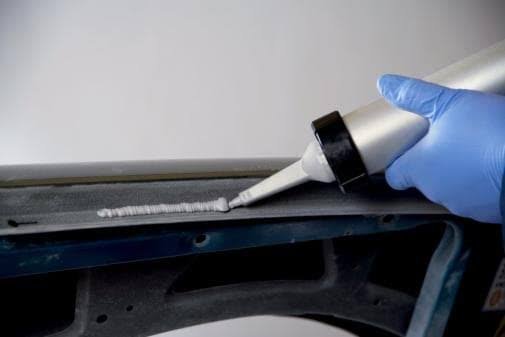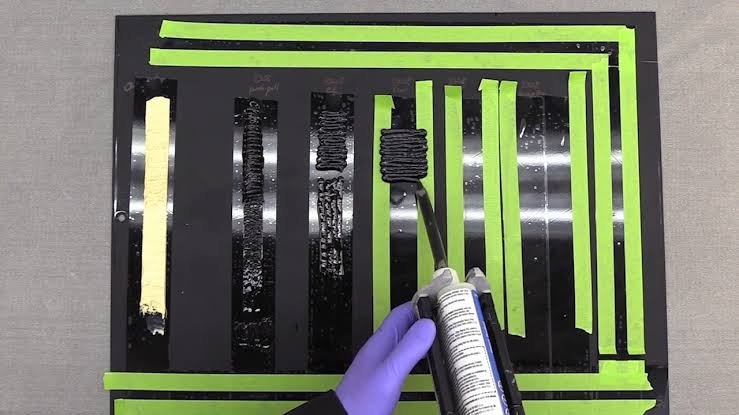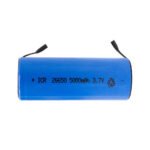Welcome to our blog post on Seam Sealer Automotive – the ultimate solution for protecting your vehicle inside out! Whether you’re a car enthusiast or simply concerned about maintaining the value and longevity of your vehicle, you’ve come to the right place. In this article, we will explore what seam sealer automotive is all about, why it’s crucial for your vehicle’s well-being, different types of seam sealers available in the market, how to apply them effectively, common mistakes to avoid, and other ways to safeguard your beloved automobile. So buckle up and get ready to dive into the fascinating world of seam sealing and its incredible benefits for your ride!
What is Seam Sealer Automotive?

Seam sealer automotive is a specially formulated product designed to protect your vehicle from moisture, rust, and corrosion. It is typically used to seal the seams and joints in various parts of your car’s body, such as the doors, hood, trunk, and roof. These areas are prone to water leakage and can become breeding grounds for rust over time if left unprotected.
The seam sealing process involves applying a waterproof sealant that fills any gaps or cracks in the seams, creating a barrier against water intrusion. This not only prevents damage to your vehicle’s interior but also helps maintain its structural integrity by preventing rust formation.
One of the key benefits of using seam sealer automotive is its versatility. It can be applied on both new vehicles during assembly or on older ones as part of maintenance or restoration projects. Additionally, there are different types of seam sealers available in the market to suit specific needs – these include brushable seam sealers, spray-on varieties, and self-leveling options.
No matter which type you choose, proper application is crucial for optimal results. Cleanliness and surface preparation play an essential role before applying the sealer to ensure maximum adhesion and longevity. Always follow manufacturer instructions carefully when it comes to drying times and recommended number of coats.
By investing in seam sealing for your vehicle, you’re taking proactive measures toward protecting it from potential damage caused by water infiltration. Not only does this help preserve your car’s appearance but also contributes significantly to its overall value should you decide to sell or trade it in the future.
The Importance of Seam Sealing for Your Vehicle
Seam sealing may not be the most glamorous aspect of automotive maintenance, but it plays a crucial role in protecting your vehicle from various issues. Whether you’re driving through rain, snow, or off-road terrains, the seams and joints on your vehicle are vulnerable to water leaks and corrosion. This is where seam sealer automotive comes into play.
By applying seam sealer to your vehicle’s seams and joints, you create a watertight barrier that prevents moisture from seeping in. This helps to maintain the structural integrity of your car and prolong its lifespan. Additionally, seam sealing also acts as an effective sound deadener by reducing road noise inside the cabin.
There are different types of seam sealers available on the market today. One popular option is brushable seam sealer which offers easy application using a paintbrush or foam applicator. Another type is sprayable seam sealer which provides quick coverage for larger areas.
To apply seam sealer effectively, start by thoroughly cleaning and drying the surface area you plan to seal. Then use masking tape to protect surrounding areas from accidental overspray or brush strokes. Apply the seam sealer evenly along the seams or joints using smooth strokes for best results.
However, it’s important to avoid common mistakes when using seam sealers such as applying too much product at once or neglecting proper surface preparation. These errors can hinder adhesion and lead to inefficient sealing.
In addition to utilizing a quality seam sealer automotive product, there are other ways you can protect your vehicle both inside out. Regular washing and waxing help keep dirt and contaminants at bay while maintaining your car’s exterior shine. Interior protection includes using floor mats, seat covers, UV-resistant window tints or sunshades (especially during hot summer months), and using leather cleaners/conditioners for upholstery upkeep.
Taking proactive measures like these will ensure that your treasured automobile remains well-protected against external elements while preserving its resale value.
Different Types of Seam Sealers and Their Uses

When it comes to protecting your vehicle, seam sealing is an essential step in the process. There are various types of seam sealers available on the market, each with its own unique properties and uses. Understanding the different options can help you choose the right one for your specific needs.
One common type of seam sealer is a brushable seam sealer. As the name suggests, this type of sealer can be easily applied with a brush or applicator tool. It provides a flexible and durable finish that helps prevent water leaks and rust formation.
Another option is a sprayable seam sealer, which can be applied using an airless sprayer or aerosol can. This type of sealer offers excellent coverage and adhesion, making it suitable for larger areas or hard-to-reach spots.
For more specialized applications, such as sealing gaps around windows or seams in convertible tops, there are also specific seam sealers designed for these purposes. These sealers often come in tubes or cartridges for easy application.
In addition to their primary function of preventing water intrusion, some seam sealers also offer sound deadening properties. These products help reduce road noise inside the vehicle cabin, creating a quieter driving experience.
Choosing the right type of seam sealer depends on factors such as application method preference and intended use. By understanding the various options available to you, you can make an informed decision that will provide optimal protection for your vehicle’s interior and exterior surfaces.
How to Apply Seam Sealer to Your Vehicle
Applying seam sealer to your vehicle is a crucial step in ensuring its long-lasting protection. With the right technique and tools, you can effectively seal any gaps or seams, preventing water leaks and corrosion.
Before you begin applying the seam sealer, make sure to thoroughly clean and dry the area you’ll be working on. Remove any dirt, rust, or old sealant using a wire brush or sandpaper.
Next, choose the appropriate type of seam sealer for your specific application. There are various types available, including brush-on sealers and cartridge-based sealants that can be applied with a caulking gun. Consider factors such as flexibility, adhesion properties, and compatibility with different materials when making your selection.
When it comes to actually applying the seam sealer, start by loading it onto an applicator tool or brush. Apply an even layer along the seam or gap while maintaining consistent pressure throughout. Make sure to fill any voids completely without over-applying.
Smooth out the applied sealer using a putty knife or plastic spreader to create a seamless finish. This will not only enhance its appearance but also improve its effectiveness in preventing moisture intrusion.
Allow ample time for the seam sealer to cure according to manufacturer instructions before exposing it to water or other elements that may compromise its integrity.
By following these steps carefully and paying attention to detail during application, you can ensure optimal results and maximize protection for your vehicle’s vulnerable areas.
Common Mistakes to Avoid When Using Seam Sealer

Applying seam sealer may seem like a straightforward task, but there are some common mistakes that can compromise its effectiveness. To ensure optimal results and protect your vehicle inside out, it’s essential to avoid these pitfalls.
One mistake is applying too much seam sealer. While it might seem logical to use more product for better protection, excessive application can lead to uneven drying and a thick, unsightly finish. Instead, follow the manufacturer’s instructions on the appropriate amount of sealant needed for each seam.
Another common error is not properly preparing the surface before applying seam sealer. Neglecting to clean and degrease the area thoroughly can prevent proper adhesion and result in premature failure. Take the time to remove any dirt or debris from the seams using a suitable cleaner or solvent before sealing.
Additionally, rushing through the curing process is another mistake to avoid. Seam sealers require adequate drying time to achieve their desired strength and durability. Failure to allow sufficient curing time may cause cracking or peeling of the sealant, compromising its protective qualities.
Overlooking regular maintenance after applying seam sealer can be detrimental in maintaining its effectiveness over time. It’s important to routinely inspect sealed areas for any signs of damage or wear and reapply as necessary.
By avoiding these common mistakes when using seam sealer automotive products, you can ensure long-lasting protection for your vehicle both inside and out.
Other Ways to Protect Your Vehicle Inside Out
Aside from using seam sealer automotive, there are several other ways you can protect your vehicle from the inside out. One important aspect is keeping your interior clean and free of dirt, debris, and spills. Regular vacuuming and wiping down surfaces with appropriate cleaners can help maintain the condition of your car’s upholstery.
Another key element in protecting your vehicle is investing in quality floor mats. Floor mats act as a barrier between dirt, mud, and liquids that may be brought into the car on passengers’ shoes or belongings. They help prevent stains and damage to the flooring beneath.
Applying a protective coating to your car’s paintwork is also beneficial in safeguarding its exterior. This can include waxing or sealing treatments that create a layer of protection against UV rays, harsh weather conditions, and environmental contaminants such as bird droppings or tree sap.
Moreover, parking your vehicle in shaded areas whenever possible helps reduce exposure to direct sunlight which can cause fading or even cracking of interior materials over time. Additionally, using sunshades on windshields during hot days further prevents heat buildup inside the car.
Regular maintenance plays an essential role in extending the lifespan of your vehicle too. Following recommended service schedules for oil changes, tire rotations, filter replacements, and other routine checks keeps all aspects of your car running smoothly while minimizing potential issues that could lead to more significant problems down the line.
Lastly but importantly consider investing in security measures like alarm systems or GPS tracking devices for added protection against theft or vandalism.
By implementing these additional steps along with using seam sealer automotive where necessary ensures comprehensive protection for both the interior and exterior of your beloved vehicle!
Conclusion
As we wrap up our discussion on seam sealer automotive, it’s clear that this product plays a crucial role in protecting your vehicle inside out. Whether you’re dealing with potential leaks, rust formation, or simply want to maintain the structural integrity of your car, seam sealing is an essential step.
Throughout this article, we’ve explored what seam sealer automotive is and why it’s important for your vehicle. We also discussed the different types of sealers available and their specific uses. From brush-on options to sprayable formulas, there are various products to suit your needs.
We’ve also provided insights into how to properly apply seam sealer to ensure maximum effectiveness. By following the correct techniques and avoiding common mistakes like over-application or improper surface preparation, you can achieve long-lasting results.
However, it’s worth noting that seam sealing is just one aspect of protecting your vehicle. Regular maintenance such as washing, waxing, and addressing any paint chips or scratches should not be overlooked. Additionally, keeping up with routine inspections will help identify any hidden issues before they escalate.
So go ahead and give your vehicle the attention it deserves by investing in quality seam sealer automotive products – because prevention is always better than cure!
FAQ’s
Q: Can I use any type of seam sealer for my vehicle?
A: It is recommended to use a seam sealer specifically designed for automotive applications. These sealers are formulated to withstand the harsh conditions and temperatures that vehicles can experience.
Q: Do I need to apply seam sealer to every part of my vehicle?
No, not every part of your vehicle will require seam sealing. Focus on areas that are prone to water or air leaks, such as seams in the body panels, floor pans, and wheel wells.
Q: How long does it take for seam sealer to dry?
The drying time can vary depending on the brand and type of seam sealer used. Generally, it can take anywhere from 30 minutes to several hours for the sealer to fully cure.
Q: Can I paint over the seam sealer?
Yes, most automotive sealers are paintable once they have dried completely. However, it is important to check the manufacturer’s instructions for specific guidelines on painting over the particular product you are using.
Q: How often should I reapply seam sealer?
Seam sealers provide long-lasting protection when applied correctly. However, over time and with regular wear and tear, they may deteriorate or become damaged. It is a good idea to inspect your vehicle regularly and reapply or touch up any areas where the sealant has worn away or been compromised.




